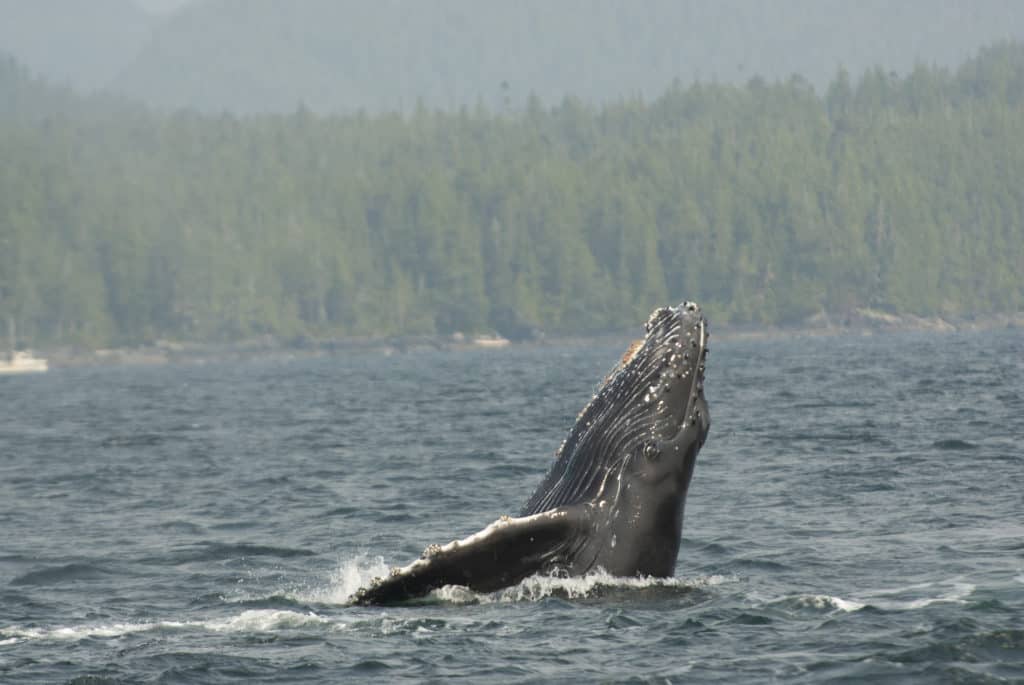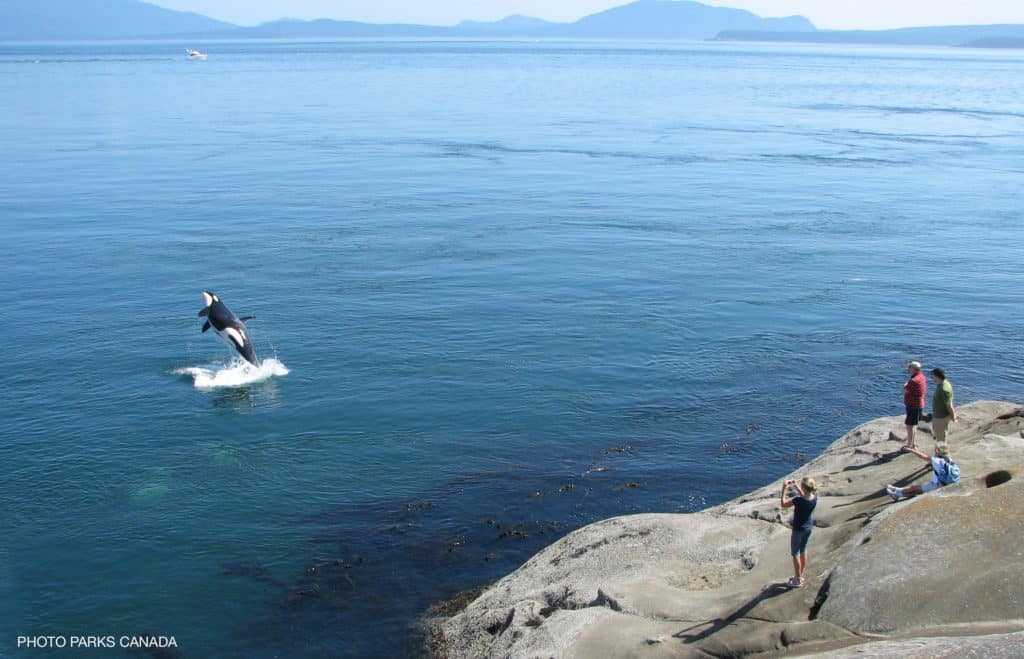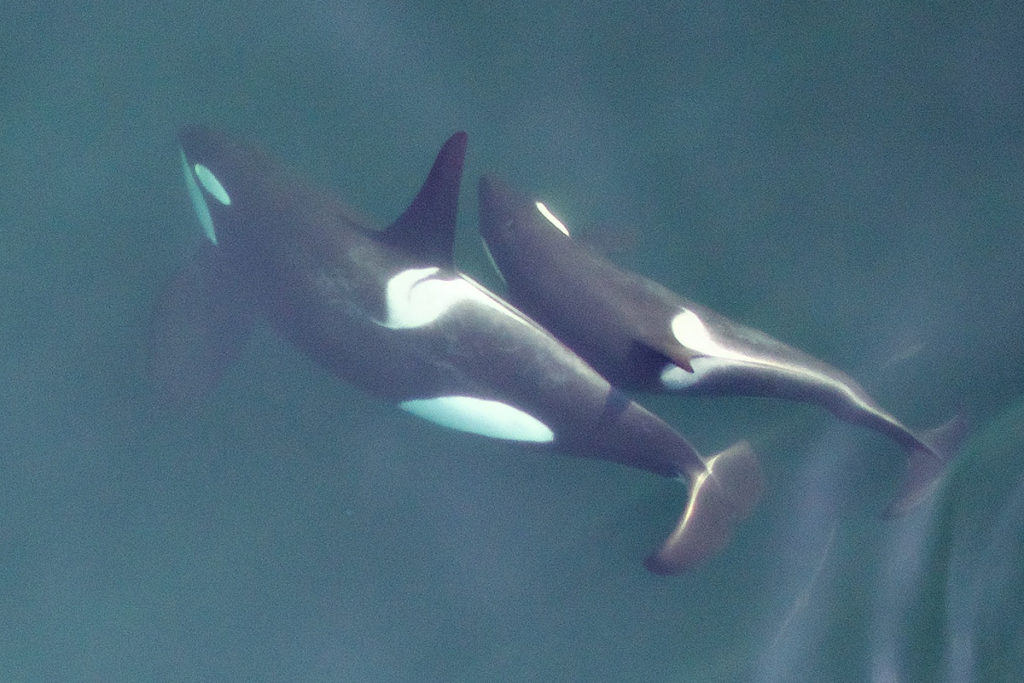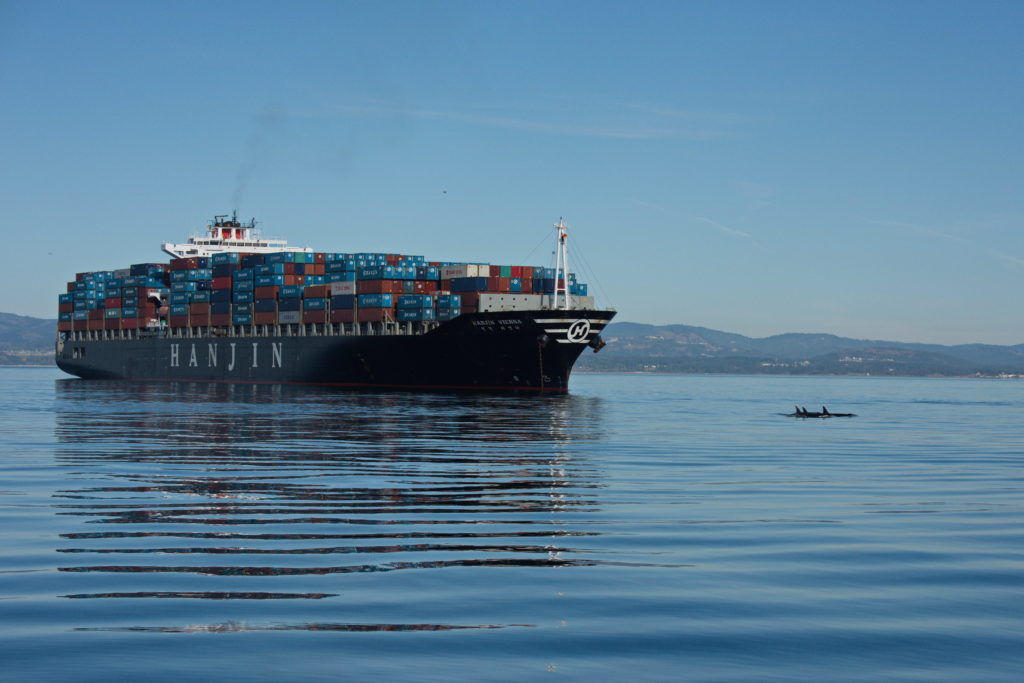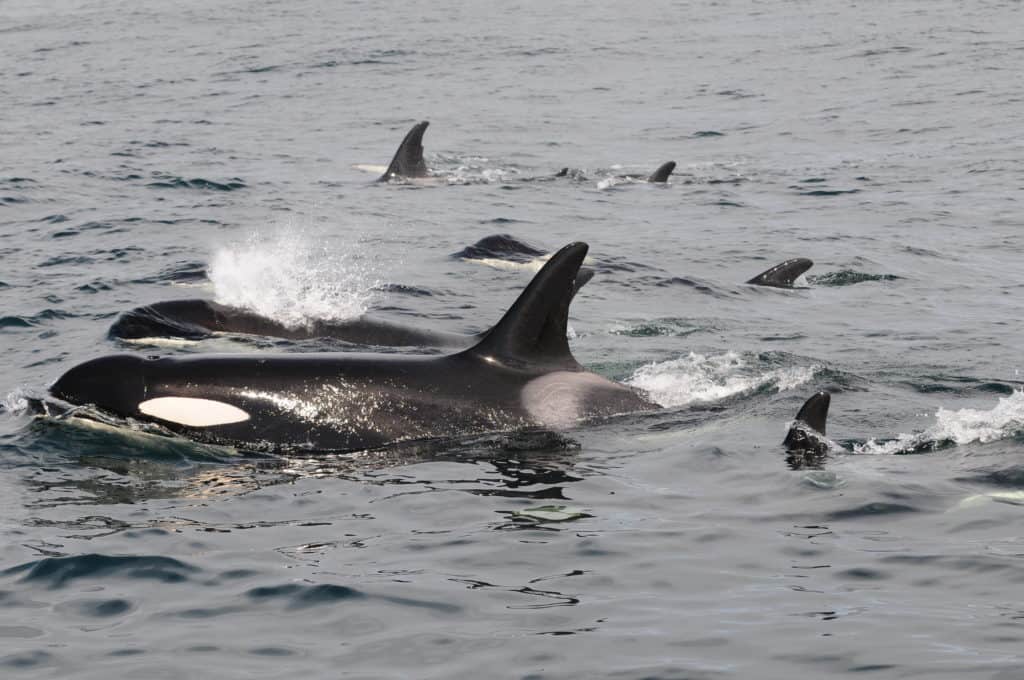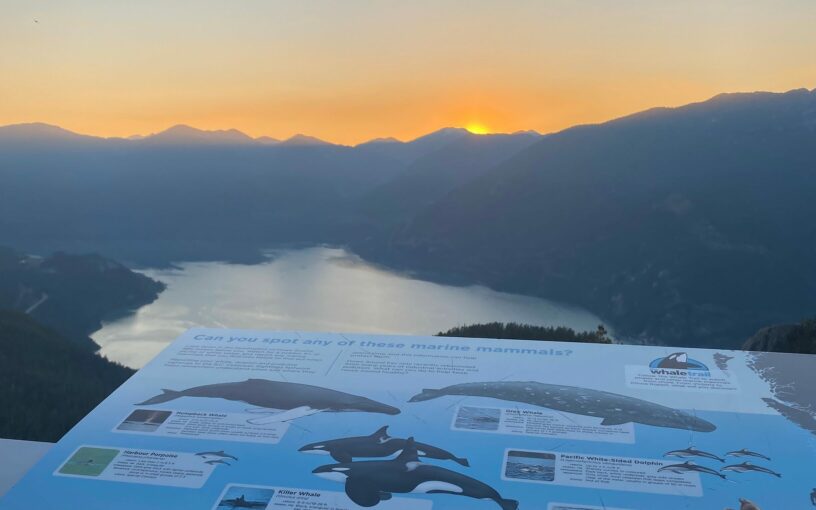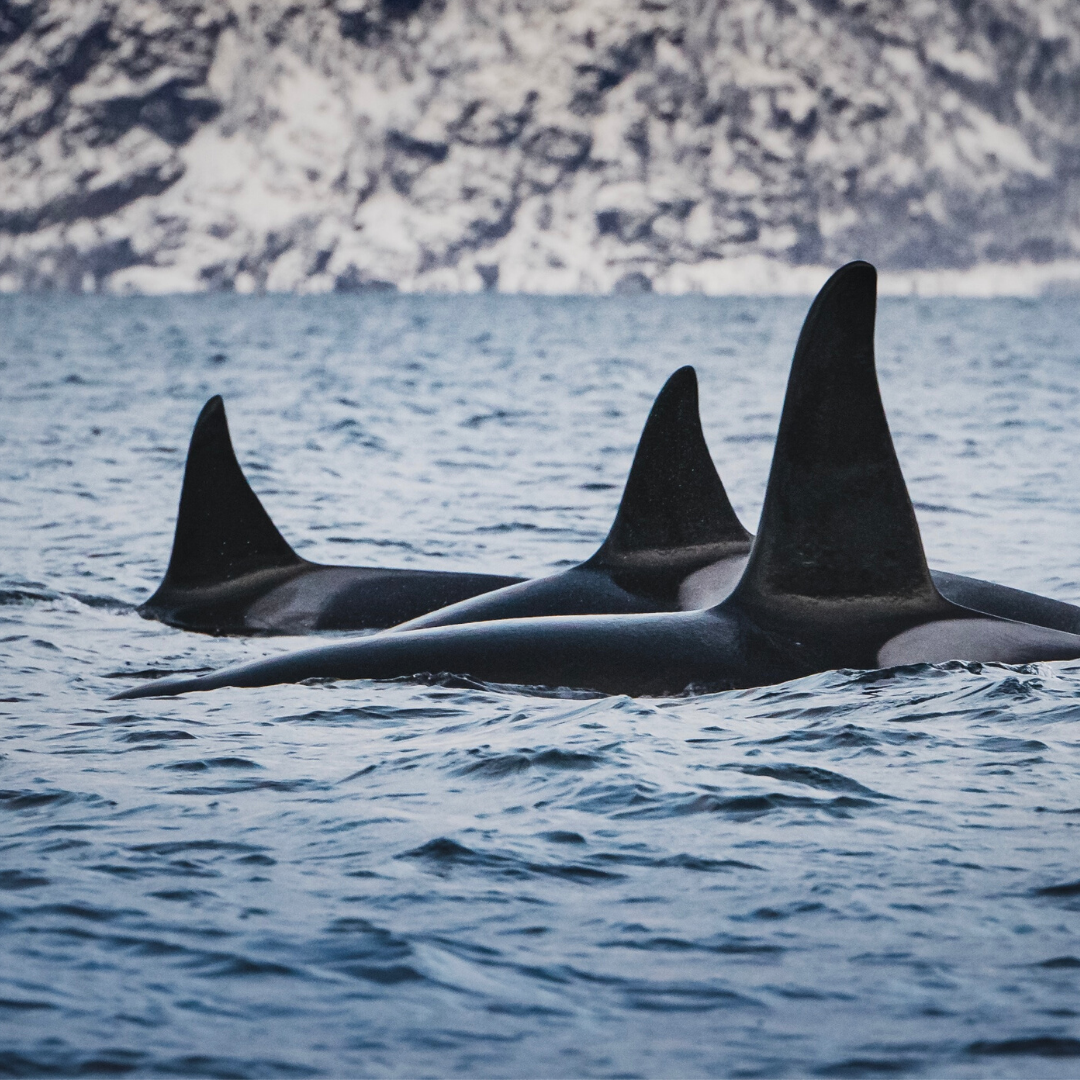A Fin-Filled Family Day
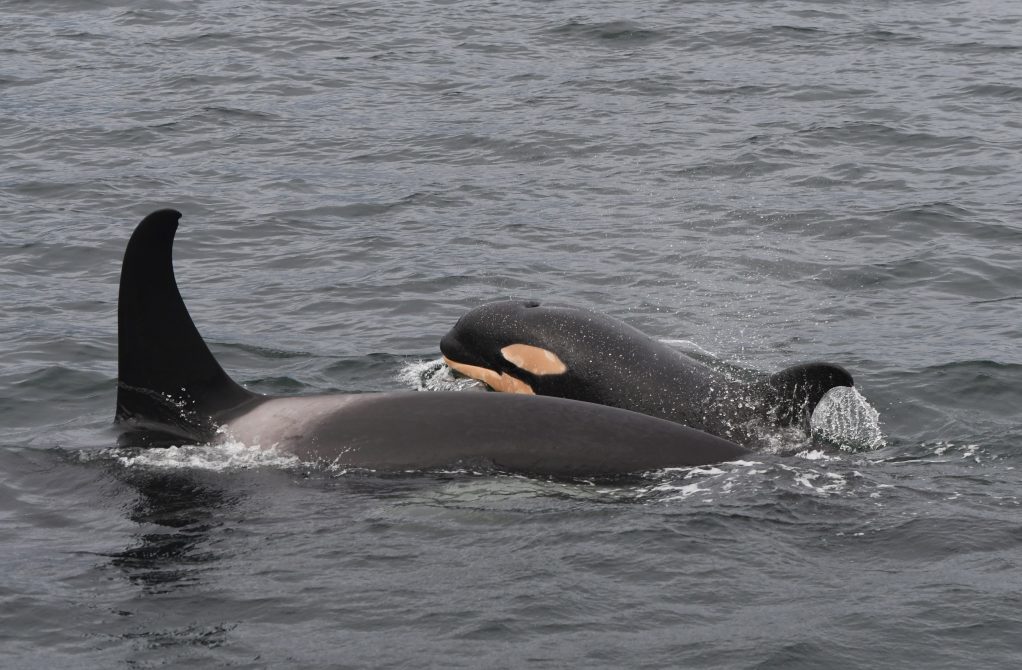
On Family Day (February 19, 2024) some unexpected visitors entered the waters of Howe Sound, causing quite a splash!
Onlookers were delighted to spot all 16 members of the A5 pod of northern resident killer whales. While killer whales are the second most reported cetacean (whales, dolphins, and porpoises) to the Ocean Wise Sightings Network, encountering northern resident killer whales in the Salish Sea is a rare occurrence.
The A42s – one matriline included in the 15 pod – visit the Salish Sea only a few times a year and are known for rubbing their bellies on the pebbly beaches near Sechelt, a behaviour unique to this population. This killer whale family has become familiar to the local community, many of whom can identify these individuals on sight. Unlike the Bigg’s (transient) killer whales that are more commonly spotted in the area, resident killer whales tend to have curved or rounded fins and open saddle patches. Matriarch A42 (Sonora) is an excellent example of this, and her unique appearance makes her easy to identify. Their visit was particularly special this year, with the first sighting of A79 (Current)’s new calf and the appearance of all members of the A5 pod travelling alongside the A42s.
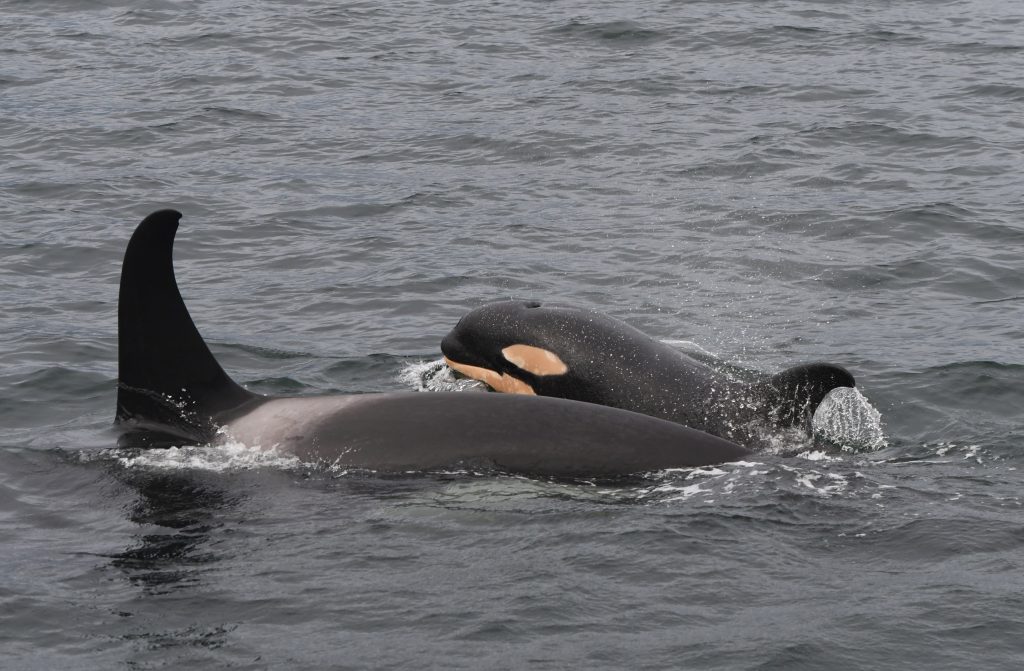
For resident killer whales, every day is Family Day. After human beings, killer whales have some of the most complex cultures and social structures of any species on the planet. Northern resident killer whales are matrilineal, which means that a female (matriarch), her sons and daughters, and her daughters’ offspring will all stay together for life. These families are known as matrilines. A pod consists of several closely related matrilines that can be seen travelling together at least part of the time. A5 Pod consists of three matrilines: the A42s, A25s, and the A23s.
What was enticing these northerners to the area?
That’s what the Ocean Wise whale initiative was on the water to find out! Operating under research permit MML-18, the team spent two days collecting prey and Environmental DNA samples from the whales to better understand the winter diets of these whales. Environmental DNA (eDNA) originates from genetic material in skin cells and fecal material that is left behind in the water when a whale dives. Ocean Wise researchers collects this eDNA in a minimally invasive way via our research vessel, Skana by approaching the area after the whale dives and scooping water from the flukeprint (the calm, circular patch of water that is left behind after a whale dives).
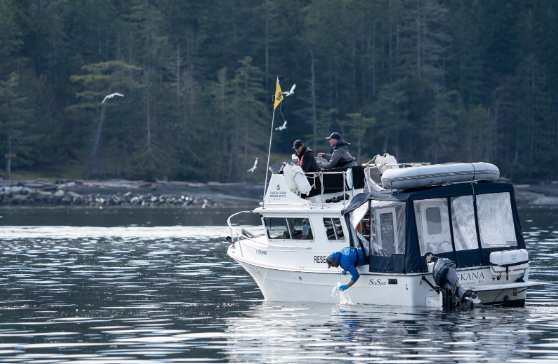
Northern resident killer whales are listed as Threatened under Canada’s Species at Risk Act. Threats which impact their survival include prey availability, exposure to pollutants, and vessel disturbance. Results of our winter study will help us to better understand what is driving these whales to visit these southern waters during the winter months. More specifically, what are they feeding on and where are they catching it. These are big data gaps in the recovery strategies for killer whale populations in BC and addressing them will be important for making informed conservation efforts moving forward.
You can also help to protect these iconic animals with a few simple actions
- Send a sighting! Download the WhaleReport app on your phone. In addition to supporting conservation-based research, real-time sightings are sent to large ships via the Whale Report Alert System, giving shipmasters time to slow down and divert course in the vicinity of whales, reducing the risk of strike and disturbance.
- Stay at least 400 metres from killer whales (200 metres for other marine mammals). Follow the Marine Mammal Regulations and Be Whale Wise Guidelines while on a vessel of any type (this includes paddleboards and kayaks!).
Posted March 5, 2024 by Rosemary Newton
